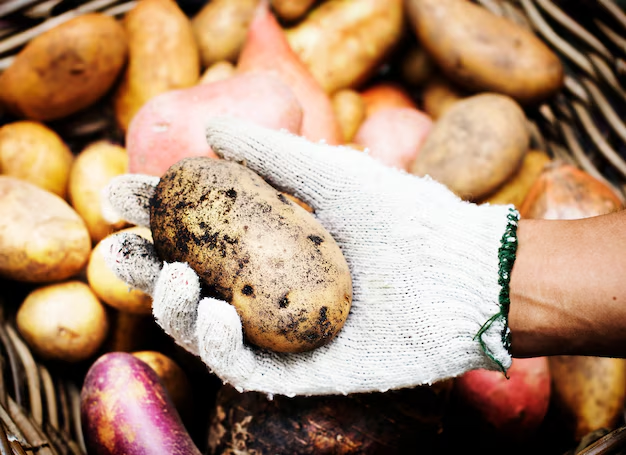Can Diabetics Enjoy Potatoes? Decoding the Health Aspects
Potatoes are a staple in many diets worldwide. Their versatility makes them a favorite, whether mashed, baked, or fried. But when it comes to diabetes management, the question arises: Are potatoes a friend or foe for those with diabetes? Let's dig deeper and shed light on potatoes' role in diabetic diets.
Understanding Potatoes: Nutritional Overview
When looking at potatoes from a nutritional point of view, they boast multiple beneficial components:
- High Carbohydrate Content: Potatoes are primarily composed of carbohydrates. This macronutrient can cause concern for diabetics as excessive carbohydrate intake can affect blood sugar levels.
- Rich in Vitamins and Minerals: Potatoes offer a good dose of vitamins C and B6, potassium, and manganese. These nutrients support overall health and are particularly beneficial for maintaining energy levels.
- Dietary Fiber: Some potato varieties, especially when consumed with the skin, provide a decent amount of dietary fiber, which aids in digestion and can help stabilize blood glucose levels.
Are All Potatoes Created Equal?
Not all potatoes are nutritionally identical. Below is an overview based on common potato varieties:
- White Potatoes: Standard variety often found in homes. High in starch and tends to have a higher glycemic index.
- Sweet Potatoes: Known for their lower glycemic index. They are rich in beta-carotene and antioxidants.
- New Potatoes: These young potatoes generally have a lower starch content compared to mature potatoes.
The Glycemic Index and Potatoes
What is the Glycemic Index (GI)?
The glycemic index (GI) assesses how quickly foods containing carbohydrates raise blood glucose levels. Foods with a high GI are digested quickly, leading to rapid blood sugar spikes, while low-GI foods digest more slowly.
Potatoes and Their GI
- High GI Varieties: Many white potatoes have a high GI, especially when boiled or mashed, leading to quick spikes in blood sugar.
- Lower GI Options: Sweet potatoes score lower on the GI scale, making them a more diabetes-friendly option.
To manage blood sugar levels, diabetics might consider choosing potato preparations and varieties that are lower on the glycemic index. Cooking methods (like baking instead of boiling) and companion foods can also affect a meal's overall GI.
Benefits of Including Potatoes in a Diabetic Diet
Source of Energy
Potatoes are a prime source of energy. Their carbohydrate content can be a valuable energy booster, particularly if consumed in moderation.
Nutrient Density
With their rich vitamin and mineral content, potatoes can be a nutritious addition to a diabetic-friendly diet. Potassium, for example, is crucial for heart health and maintaining normal blood pressure.
Satiety and Hunger Management
The fiber content in potatoes, especially when consumed with the skin, can help maintain a feeling of fullness for longer, potentially aiding in weight management—an important factor for diabetics.
Smart Potato Consumption Tips 🍟
Incorporate these practical tips to enjoy potatoes in a diabetes-friendly manner:
- Opt for Sweet Potatoes: Lower on the GI scale and nutrient-rich.
- Moderate Portion Sizes: Stick to appropriate serving sizes to manage carbohydrate intake.
- Choose the Right Cooking Methods: Baking or steaming over frying.
- Pair with Protein and Fiber: Combine with protein-rich foods or high-fiber vegetables to balance blood glucose impact.
- Include the Skin: Retains fiber and nutrients.
Fun and Healthy Ways to Prepare Potatoes 🍠
1. Baked Sweet Potato Fries
Swap traditional fried potatoes for healthier baked sweet potato fries. Sprinkle with your favorite herbs and spices for added flavor.
2. Potato Salad with a Twist
Upgrade your potato salad with vinaigrette instead of mayo, and add veggies like cucumbers, bell peppers, and onions for extra fiber.
3. Stuffed Sweet Potatoes
Fill baked sweet potatoes with a mix of lean protein, like grilled chicken, and veggies for a balanced meal.
Potatoes in the Context of Meals
Breakfast Boost
Consider adding small amounts of potatoes to egg-based breakfast dishes for an energy-rich start. Ensure ample protein to balance the carbs.
Potatoes in Main Meals
For lunch or dinner, combine moderate servings of potatoes with non-starchy vegetables and a source of lean protein to construct a balanced meal.
Summary of Key Tips for Diabetic-Friendly Potato Consumption 🍽️
- 🥔 Choose lower-GI varieties like sweet potatoes.
- 📏 Monitor portion sizes carefully.
- 🍳 Opt for baking, roasting, or steaming over frying.
- 🥗 Pair with proteins and high-fiber foods to reduce GI impact.
- 👍 Eat them with the skin on for additional fiber.
These mindful practices can help those managing diabetes enjoy the nutritional benefits of potatoes without compromising their health goals.
By understanding the nutritional profile of potatoes and preparing them thoughtfully, they can be part of a balanced and enjoyable diet for those managing diabetes. The key lies in making informed choices and balancing meals with other nutrient-rich foods.
